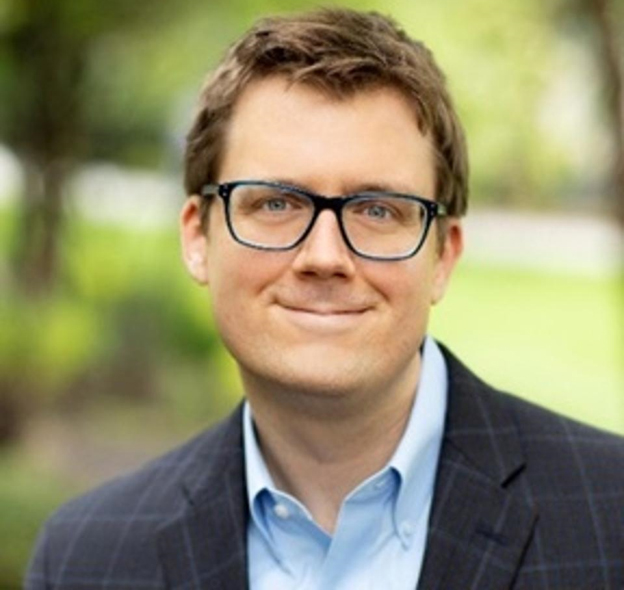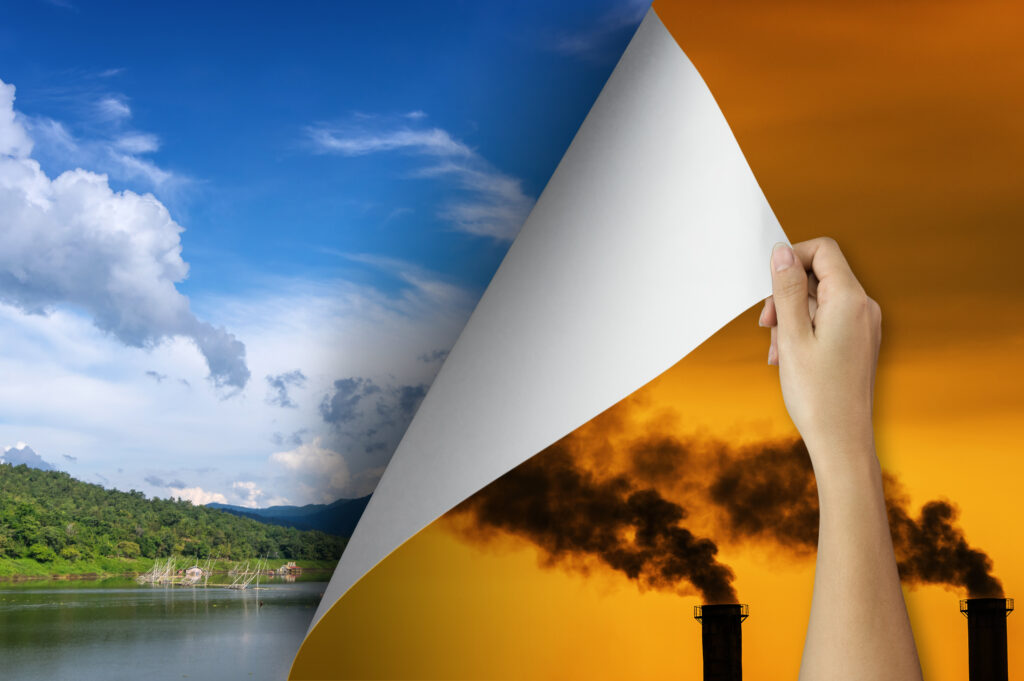Carbon removal is having a moment. The latest report of the United Nations’ Intergovernmental Panel on Climate Change (IPCC) notes that carbon dioxide removal (CDR) is essential for meeting the goal of limiting global warming to 1.5°C by the middle of this century. The United States Department of Energy recently announced it will be investing over $3.5 billion in a program to set up regional Direct Air Capture (DAC) Hubs across the United States in order to remove carbon from the air and safely store it. CNBC even called out that everyone from Bill Gates to the Pope is talking about carbon capture.
So, what is this relatively new technology, and how is it being used?
To better understand it, I spoke with Brian Marrs, Senior Director of Energy & Carbon Removal at Microsoft. Microsoft is a first mover in this domain, both as an investor in different carbon removal strategies and technologies through its $1 billion Climate Innovation Fund and as a customer, contracting with companies to remove carbon on its behalf as part of the company’s efforts to meet its 2030 sustainability goals: to be carbon negative, water positive, zero waste, and protect ecosystems. With respect to carbon, the company also has an additional 2050 goal: to remove all carbon that the company has emitted since its founding in 1975.
It’s a complicated but fascinating topic, and I will be publishing my interview with Brian in two parts. In Part 1, we explore the fundamentals: what is carbon removal; what are the foundations for building a high-quality carbon removal market; and what is the business case, including for a company like Microsoft.

Brian Marrs, Senior Director Of Energy & Carbon Removal
Eccles: Brian, thanks for taking the time to me to talk about something I know virtually nothing about! For starters, please tell me a bit about your background and how you got into carbon removal.
Marrs: I grew up in central Virginia in the heart of the Blue Ridge Mountains. I love my home state, and I completed my undergraduate studies at the University of Virginia, where I studied Foreign Affairs with an economics designation, as well as Middle Eastern Studies.
Post-graduation, I entered the energy industry because I think it is one of the greatest stories ever told – few industries feature the rapid-fire interplay of technology, business, and regulation factors with such profound outcomes. I started my career in oil and gas consulting, but I really wanted to get into electric power and clean energy. I eventually ended up working in Berlin, Germany for Vattenfall, a major, pan-European power company. It was such an exciting time to be in the electricity business, because at the time, Europe started to roll out the foundations for early carbon markets in the EU ETS, and the initial market-based instruments for renewable energy had launched in early phases.
In 2010, I moved back to the United States for graduate school at Yale, what was then the Yale School of Forestry and is now the Yale School of Environment, where my studies focused on solving environmental problems through economics. I am fascinated by market-based instruments to create positive environmental change through technology and commercial innovation.
Eccles: That’s an interesting background but how did you end up across the country at Microsoft?
Marrs: I joined Microsoft in 2017. At the time, I was employee 11 on the Energy & Sustainability team in Microsoft Cloud and now we are nearing 100 employees, so this space has really grown within the company over these last five years! My role has empowered me to do two things that I love in my professional life. The first is building high-performing teams. The second is working on first-of-its-kind deals and programs; that is where carbon removal fits in. And on that note, I like to think of my career as getting lower and lower carbon over time: from oil and gas, to clean energy, and now to carbon negative in terms of actually removing carbon from the atmosphere.

Change concept, Woman hand turning pollution page revealing nature landscape, changing reality, hope inspiration, environmental protection, change weather, environmental campaign. (Photo: iStock)
Eccles: For someone who has never heard of carbon removal, what is it? And what are the different types of carbon removal?
Marrs: Fundamentally, carbon removal is the process of removing carbon dioxide from the atmosphere, soil, or oceans and locking it away for a period of time — decades, centuries, or millennia. There are a number of different ways to do this, all with varying degrees of permanence, which carbon removal wonks refer to as “durability.” Durability is a term that describes how long you can expect the carbon removed to stay sequestered. The longer the period of time you can reasonably expect the carbon to be stored, the higher the durability.
Eccles: Thanks that’s helpful. And I take it that there are different degrees of durability based on different technologies?
Marrs: Exactly! There are three basic types. High durability is greater than 1,000 years, and this is mainly achieved via technology called direct air capture (DAC) and forms of bioenergy carbon capture and storage (BECCS). An example of this is a recent contract that we signed with a direct air capture company called Climeworks, in which Microsoft is also an investor, where carbon is removed from the air and stored as solidified rock in Iceland.
Medium durability is between 100 and 1000 years. There are many solutions out there now, a good one is called biochar. We have worked with a company called Carbon Streaming to sign one of the largest biochar offtake agreements in the world from a facility located in Virginia.
Low durability is 100 years or less and this mainly refers to nature-based solutions, reforestation, or afforestation – reclaiming something that was damaged or creating something brand new. The CommuniTree reforestation project in Nicaragua would be a great example of this, where we worked on reforesting marginalized farmland.
We take a portfolio approach, looking at the levels of permanence and durability that I just described and balancing that with considerations around cost, technological certainty, risk in terms of project execution, and geographical location. We are not making one bet on any one technology or approach.

In 2021 Climeworks launched Orca. Located in Iceland, it is the world’s first and largest CO2 direct air capture and storage plant. (Photo: Climeworks)
Eccles: What does the carbon removal market look like today?
Marrs: It is just too hard to buy carbon as a customer right now. The market for corporate procurement of carbon removal remains nascent and undeveloped.
This presents some self-reinforcing, fundamental challenges:
- The global carbon credit economy as it exists today was not set up for carbon removal, and instead has an undifferentiated focus on avoidance of emissions, often called ‘offsets.’
- Assessing the quality and validity of carbon removal projects is very difficult in the absence of strong protocols and verification infrastructure.
- Without a way to get clear and valid credit for funding removals, such as alignment with the Greenhouse Gas Protocol (GHG) and the Science Based Targets Initiative (SBTi), corporations do not have a strong business case to support removal projects. So, the market signal is broken. Most companies purchase carbon on the spot market in short-duration contracts, often just one year. The high-quality, transformational carbon markets that we need cannot be built on one year spot market purchases; but the market signal will not improve without better verification protocols and quality criteria.
- The current limited supply of high-quality carbon removal projects.
I like to think about today’s carbon market as akin to where the corporate power purchase agreement (PPA) market for renewable energy was about 25 years ago, but we need to innovate and deliver in probably about half the time and at probably 5X cost reduction. PPAs sent strong market signals to the market, and really anchored innovation around corporate action on clean energy.

Business and industry concept. On a green surface, a pen and a sheet of paper with the inscription – Power Purchase Agreement (Photo: Alamy)
Eccles: This is helpful but there’s a lot to unpack here. Revealing my ignorance of this domain, mind explaining to me what a PPA is to help draw the analogy?
Marrs: Sure. A PPA is a long-term contract between an electricity generator and a customer — which could be a company like Microsoft, a government, or a utility. PPAs are typically 5-20 years in duration, where the purchaser agrees to buy a certain amount of energy at an agreed price. What is important to note about PPAs is that by providing this longer-term and steady revenue, they can serve as market builders. So, PPAs were essential for building the markets for renewable energy sources like wind or solar over the last several years, and we are hoping to do something similar with purchasing of carbon removal.
Eccles: Thanks. That’s helpful. So, essentially, Microsoft views the PPA model as something that could be applied towards developing the carbon removal market?
Marrs: At Microsoft, we are thinking about how we can look out on the horizon and send a long-term market signal that says we are willing to sign a long-term offtake contract, to take delivery into the future. This gives us and developers the ability to shape the technical foundations and quality criteria around those contracts – and that is where you start to get something special, where you start to get innovation which is simply not possible on a spot market. You can create bankable projects, you can bring institutional equity and debt into the equation, and you can raise the floor on the quality of carbon products that we have today, to make sure that it is not a race to the bottom in terms of the quality of the carbon on offer.
Eccles: Got it but more to unpack for me. I’m particularly interested in your comment about the quality of carbon on offer. I have heard some harsh criticisms from people that I know and respect.

A ground texture background with pieces of grass small rocks pebbles and dirt pine needles in forest (Photo: iStock)
Marrs: Let me start by explaining the different “credits” available for purchase in the carbon market today. A very simple example is that you have a forest, and a company might buy an offset to prevent that forest from being cut down. That is known as avoidance, but it doesn’t actually remove any carbon from the atmosphere.
Eccles: Gotta admit this sounds rather dubious to me, more like smoke and mirrors than real economics. Like how do we know the forest was going to be cut down and when and how to put a value on that not happening? And what is the time frame on not cutting down the forest?
Marrs: Yep, these are exactly the kinds of problems with avoidances. Microsoft does not buy offsets and does not buy avoidance. We only buy removal. So in this example, we could purchase credits for the planting of new trees in this forest that will suck incremental carbon out of the atmosphere as they grow. The key word here is incremental.
Eccles: Good to hear but there still must be a lot of variables to be considered in purchasing the removal of carbon.
Marrs: Indeed there are. When we evaluate a carbon removal project, we rely on a set of purchasing “North Stars.” These are: additionality, durability, measurability, and environmental justice, i.e., making sure that our projects do no harm.
Eccles: This sounds fundamentally important so mind briefly explaining each of these terms for me?
Marrs: Happy to do so.
- On additionality, removals are considered ‘additional’ if they would not have occurred without carbon purchases provided to the project by the customer. The baseline of a project is a conservative estimate of the carbon and other GHG impacts that would have occurred without carbon purchases.
- Durability, which I spoke about earlier, is the approximate length of time that you can expect the carbon removed via the project to remain locked away and out of the atmosphere.
- On measurability, we have a bank of third-party technical advisors that we work with on every deal to help us independently verify that a ton of carbon that we are buying is sourced from the impact of our investment. This is important in setting the appropriate baselines and ensuring that we have data-driven decision-making, and in the process, monitor the project over the course of its contract life.
- And finally, on environmental justice, this refers to engagement, consultation, and collaboration with local communities, including historically marginalized communities, regarding the impacts of the CDR project — both positive and negative — throughout the lifetime of the project.
Eccles: Thanks. This makes your purchasing decision a lot more tangible for me. But what does this have to do with developing the carbon removal market?
Marrs: What we are pushing for is a new market for carbon removal built around these North Stars. And if we can ensure that carbon credits are evaluated against these principles, we can create new commercial tools consistently deliver high-quality carbon products. Just as the corporate PPA revolutionized the way companies participated in clean energy markets, we hope that new carbon removal purchasing agreements will revolutionize the way companies, policymakers, and really everyone participate in reaching net zero emissions.
Eccles: This really is very exciting and good for the world if it works. But, to be blunt, why is Microsoft focused on carbon removal? What is the business case?

Dense coniferous forest on the mountainside (Photo: iStock)
Marrs: We follow the climate science, and according to climate scientists, a 1.5°C increase is the limit required to avoid the worst impacts of climate change. In October 2018, the IPCC published a Special Report on Global Warming of 1.5°C. It found that “all analyzed pathways limiting warming to 1.5°C with no or limited overshoot use CDR to some extent to neutralize emissions from sources for which no mitigation measures have been identified.”
At the most fundamental level, if we don’t have a viable planet, then we don’t have a viable company, so that is the inspiration for this work and for all of Microsoft’s sustainability goals. We have set these voluntary goals because our customers care, our investors care, and our employees care, and we think this is right for the long-term health of our business model.
And the different roles we play in the market – as an investor, a customer, and a technology provider – we find that to be a compelling mix to add value in this space.
Eccles: This all makes sense to me but it does rather beg the question about any short-term impacts on profitability. Anything you can say about this?
Marrs: I would reiterate that our goals in this space are not short-term. Rather, we are taking a long-term approach both in the types of contracts we are entering into and also more broadly in our contributions to building a high-quality carbon market for the future. As the market scales, we also expect that the price of carbon removal solutions will come down over time.
Eccles: Thanks for that. Last question. When did Microsoft get into the carbon removal business?
Marrs: The carbon removal program at Microsoft was launched in 2020, when Microsoft first announced that we would be working toward becoming carbon negative by 2030 and, by 2050, removing from the atmosphere an equivalent amount of all the carbon dioxide our company has emitted either directly or by our electricity consumption since we were founded in 1975.
We have a reduction-first strategy, meaning we will reduce carbon emissions as much as possible, replace our electricity consumption with carbon-free energy, and remove the emissions that remain. We expect about 50% of our total emissions against a 2020 baseline will be addressed through carbon removal technologies.
Eccles: Thanks for your time, Brian. I’ve learned a lot. About as much as I can absorb at this point so glad we’re doing another interview! Mind giving me a heads up what we’ll be talking about for part two?
Marrs: Happy to do so, Bob. We will dive deeper into CDR as it stands today, especially some of the complications and challenges, and how companies and carbon removal purchasers can navigate and act responsibly in this market as well as drive improvements for the future.
Links to further information:
SUBSCRIBE TO OUR NEWSLETTER
Subscribe our newsletter to receive the latest news, articles and exclusive podcasts every week

